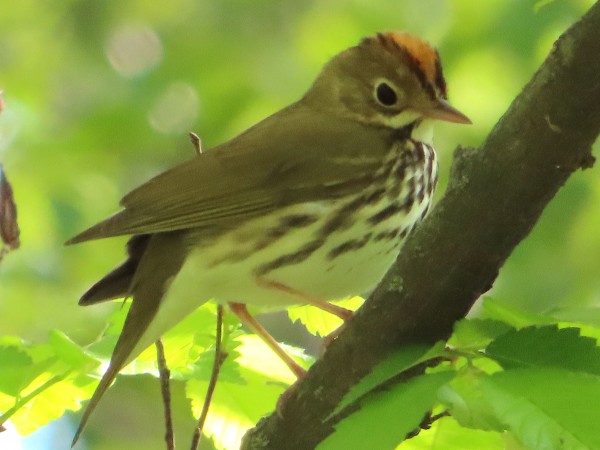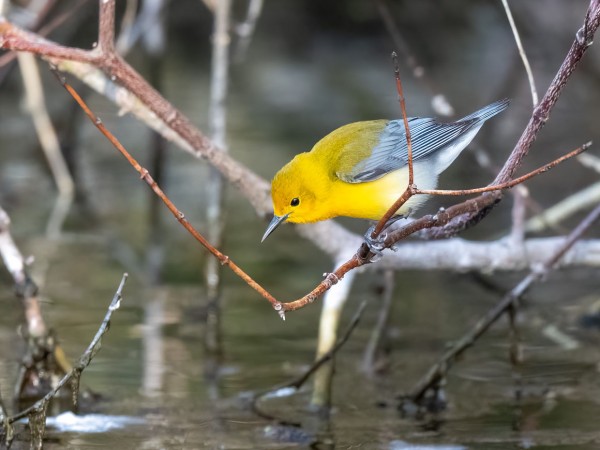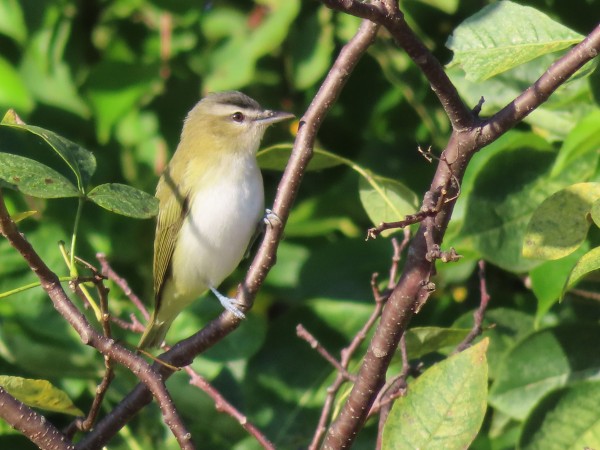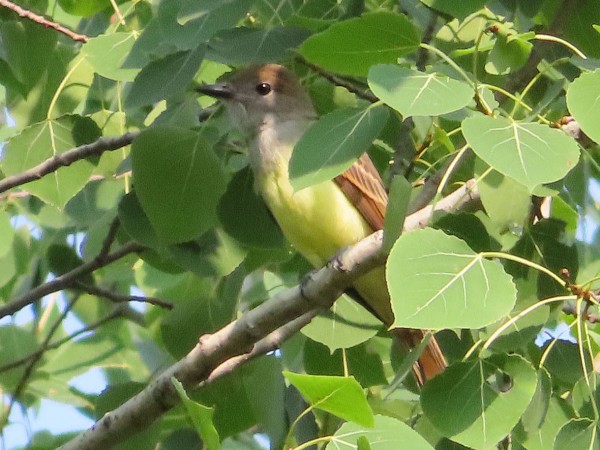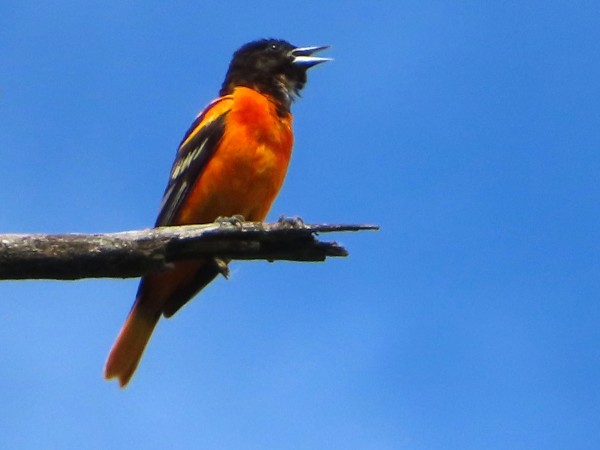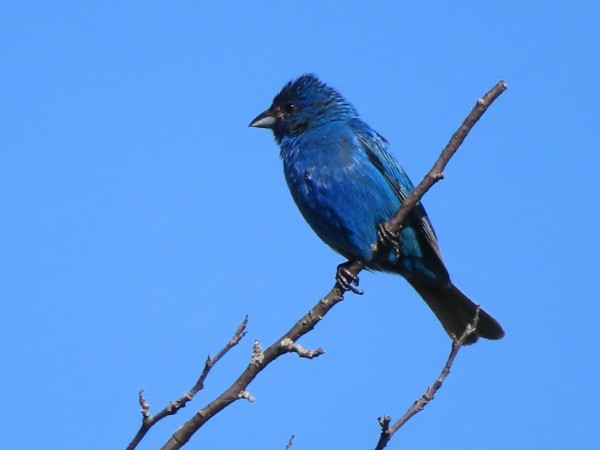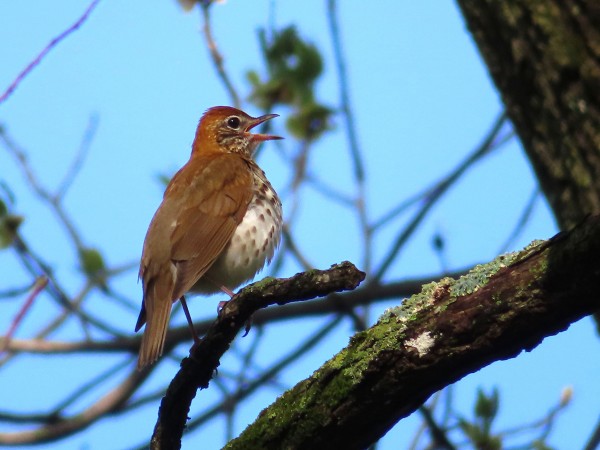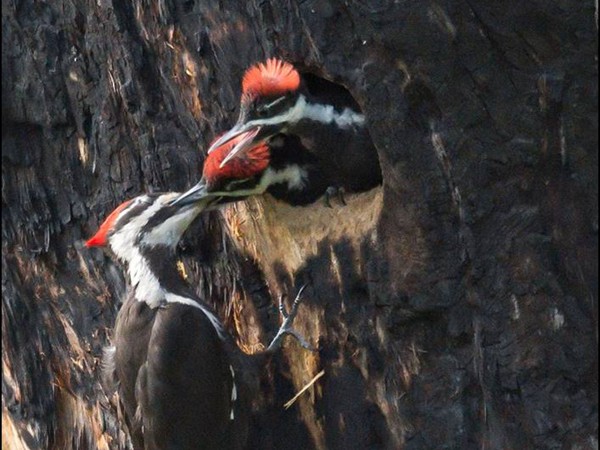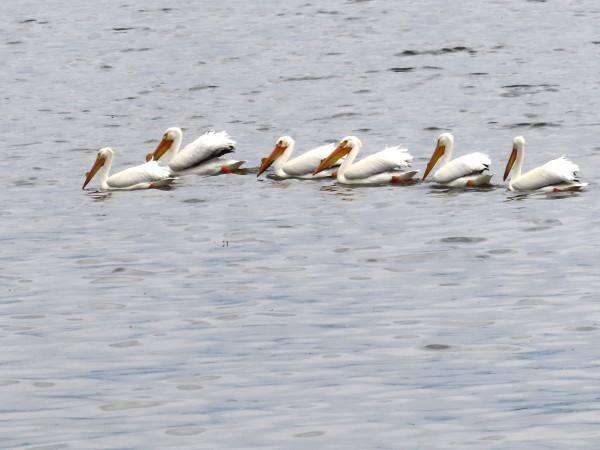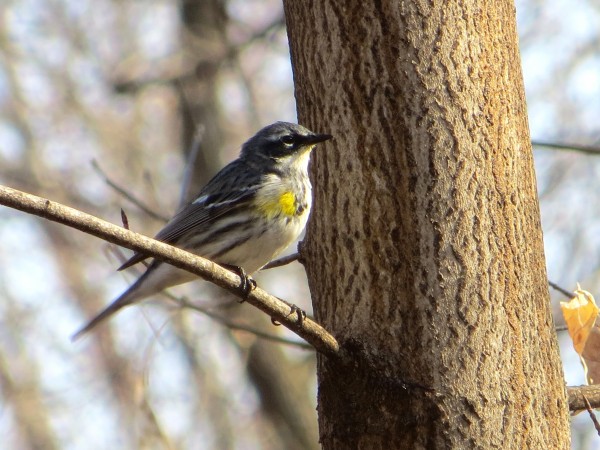Chuck's Birding Report #113
10 May - 16 May 2022
Dear fellow flock of birders,
The hot weather has had a major effect on the trees, bushes, wildflowers and insects. We were lucky that the warm weather didn’t come sooner. The trees have been fairly leafless making the birds much easier to see when they were in the trees. When the hot weather arrived that all changed. All of a sudden the trees leafed out in just a few short days. It was amazing how fast it happened. The wildflowers were blooming all over. I could see lots of insects flying, and more food for the birds. The lilacs and crabapples are bursting with flowers. It all happened so fast.
So what have the birds been doing this past week?
Even though it was hot last week the birding was unusually good. The wind was out of the south most of the time which brought lots of migrants in. We looked for spots where the wind was reduced and found some along the northern path in Wingra Woods which included Big Spring and the small spring to the east of Big Spring. The small spring was exceptionally good for watching the warblers. That spring is very shallow with many overhanging branches. Many of the warblers came down to the outflow to take baths or maybe just to cool off. Many of us sat on the log just north of the spring or stood quietly as small groups of warblers came into the bushes and worked their way down to the water. We probably saw 10-20 different warbler species at that location. To me it was magical.
We did see one Ovenbird which you can most often find walking on the leaves on the ground in the woods. I did get a photo of an Ovenbird perched on a branch of a small tree. If you don’t look closely you might mistake it for a thrush of some sort because of all the spots on its breast and belly. The distinctive feature is on the head and it is the orange crown bordered on either side by a black stripe. A photo of the Ovenbird is included.
Another warbler that came along during those hot days was a Prothonotary Warbler. It is mostly bright yellow and sometimes a bit orange too. It has gray wings lacking any wingbars. It is an impressive warbler. A photo of a Prothonotary Warbler taken by Linda Deith is included. Thank you Linda.
I could name many warblers we saw at the springs but maybe I should give equal time to some other non warbler species.
Vocalizing in Wingra Woods now and all summer are the Red-eyed Vireo and the Great Crested Flycatcher. Both species usually stay high in the tree canopy all summer.
The Red-eyed Vireo sings in short phrases. The mnemonic for its song is “Here I am, up here, in the tree, and so on.” with short pauses between each phrase. Included is a photo of the Red-eyed vireo. It is very plain looking with olive-brown upper parts and white underparts. It has a gray cap, white eyebrow, black eyeline and red eyes (only seen if the light is just right).
The Great Crested Flycatcher can have a nice song but most of the time it calls out “Weep…..weep”. Not my favorite call that I hear all summer. It is however a very handsome bird if you get a chance to see it. It does have a subtle crest on top of its head with mostly olive-green upperparts. The yellow belly really stands out as well as the rusty feathers on the wings and tail. A photo of the Great Crested Flycatcher is included.
On my walk today I saw and heard calling several Baltimore Orioles. The males are outfitted in splendid, contrasting colors of orange and black. I saw one at Spring Trail Pond singing at the top of a tree. At HoNeeUm I saw two at the northeast end of the pond near the Cottonwood Trees. Many of the branches curve downward. That’s where I’ve seen the Orioles most often build their hanging nest.They used to build them in the Cottonwood trees in the Teal Pond Marsh area but for the last couple years they have not done so. Includerd is a photo of the male Baltimore Oriole.
Another very colorful bird is the male Indigo Bunting. At this time of year they are in their breeding plumage of this eye popping, solid blue with a gray beak. I’ve seen several of them so far this year but have not seen the female in its very different cinnamon colored plumage. A photo of the male Indigo Bunting is included.
A bird that I really like for its song rather than its looks is the Wood Thrush. I can sing a beautifully flutey song which often has the phrase “E-oh-lay” in it. I’ve been hearing them sing in Wingra Woods but during the summer I most often hear them singing in Lost City Forest. The plumage is rusty colored above and white with dark black spots on a white breast and belly below. Of the thrushes the Wood Thrush really stands out visually. A photo of the Wood Thrush is included.
I checked on the Sandhill Crane sitting on the nest at Teal Pond today and it is still there. Some of the brown curtains have been dropped to further protect the crane nest from visitors. A sign has been put up to let visitors know that a nest is there and that they should be quiet when approaching. The curtains do have windows (broken plastic removed) that people can look through to see the crane on the nest.
The second to last photo relates to a recent sighting by Judi Dilks. She saw a Pileated Woodpecker making a nest in a snag just west of the boardwalk at Pond 2. The snag is actually closer to the path on its west side but the hole faces east so can be seen better at the boardwalk. I did see the Pileated stick its head out once. We have not seen a nest in the Arb since June, 2016. Mike Bailey, a fantastic photographer, photographed the woodpeckers often. I have attached one of his photos showing an adult Pileated Wood pecker feeding 2 young. Thank you Mike for letting us share your great photograph with our birding group.
The last photo is of a flock of American White Pelicans on the water. For some reason there are large numbers of pelicans around Dane County lakes and ponds right now. I’m not sure why they’ve stayed so long but they do put on quite a show when they do their group feedings. Eventually they will leave, head north to some of the large lakes not in the Door County area where they will breed and nest.
That’s the Arboretum bird report for the past week.
I wish all of you good health and good spring birding too,
Chuck

